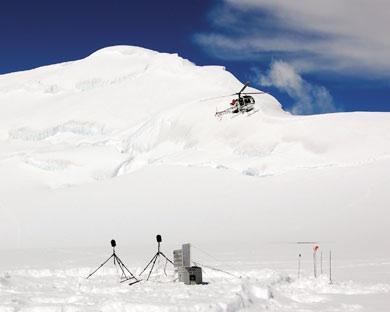Editor's note: Grand Canyon National Park isn't the only national park grappling with how to manage air tours. There have been ongoing talks in Alaska about air tours and Denali National Park. Joan Frankevich, the Alaska program manager for the National Parks Conservation Association, provides the following update on the state of those talks.
If you wanted to immerse yourself in nature, away from the frantic pace and sights and sounds of the manmade world, you might think the wilderness of Denali National Park would be the ideal place.
And you would be wrong.
While a typical backpacker will see wilderness (no signs, no bridges, no campsites and few to no people) they may hear up to 30 – 40 low flying airplanes and helicopters daily. Similarly, mountaineers at Denali are inundated with noise instead of nature. Just ten years ago, climbers at the 17,000-foot camp on Mt. McKinley in the Alaska Range rarely saw aircraft unless there was a rescue. Today, aircraft noise is nearly constant, at times so loud it drowns out conversation among the climbers.
Three years ago the National Park Service convened a group of 12 citizens to find voluntary measures to address this problem. This group, the Denali Aircraft Overflights Advisory Council represents a wide array of interests including pilots, air tour operators, backpackers and mountaineers, local landowners, conservationists, the Federal Aviation Administration (FAA), the military, and the state of Alaska. Debate among members is spirited and common ground elusive. Nonetheless, the group has worked well together and begun to make progress in Denali.
On the south side of the Alaska Range several simple changes to flight routes have noticeably improved conditions on the ground for mountaineers, and the FAA is working on distributing these voluntary measures to a wider aviation audience in Alaska. For example, during the climbing season, air tours flying through Kahiltna Pass climb to higher altitudes early in their flight to avoid circling right above climbers. Flights also try to avoid the popular camping spots at 14,000 and 17,000 feet, and fly a greater distance from the summit of Mt. McKinley. NPCA is pleased with these efforts and very supportive of the new voluntary measures.
This summer another new route will be field-tested with the goal of minimizing sound impacts to climbers in the Ruth Gorge. Additionally, several air tour companies have voluntarily changed their marketing materials so they no longer advertise the possibility of seeing climbers or wildlife from the air. This changes expectations and reduces the need to fly at low altitudes, lessening the noise on the ground for people and wildlife.
On the north side of the park, finding solutions to lessen flight noise for backpackers, day hikers and campers has been more elusive. Even so, the council continues to discuss ideas and look for workable options.
While progress seems slow, Denali Superintendent Paul Anderson recently commended the Denali Overflights group for successfully working together to find solutions that benefit air tour companies, visitors, and climbers in the park.
For more information on the Denali Aircraft Overflights Advisory Council visit: http://www.nps.gov/dena/parkmgmt/aoac.htm
For more than 10 years Joan has worked for the Alaska office of the National Parks Conservation Association on park protection issues for national parks in Alaska. Previously Joan has worked as a seasonal ranger for the Park Service in Denali and Sequoia and for the U.S. Forest Service in the Chugach and Tongass National Forests.




Comments
The worse noise anyone could ever here in the BC, an airplane.. working in denali and hiking every weekend i started going to units north of the road instead because of all the noise pollution surrounding the alaska range. You would always know when it was 9 in the morning because if its a bit sunny a parade of air traffic would begin. It is not your god given right to fly anywhere you want, sticking to specific routes seems to be of the most challenging task for tour companys. please lets stop airplane traffic in denali!!!!!it disturbs wildlife, period. i have seen momma bear up on 2 legs watching as touring helicopters fly low. helicopters have been known to stock wildlife up riley as well, longing for there big tip in the end, please....alright, lets not turn denali into a joke, its not kauai, is it? Denali is worth more money then any flight companys could bring to the park service, period. time is now! is anyone else hearing this?